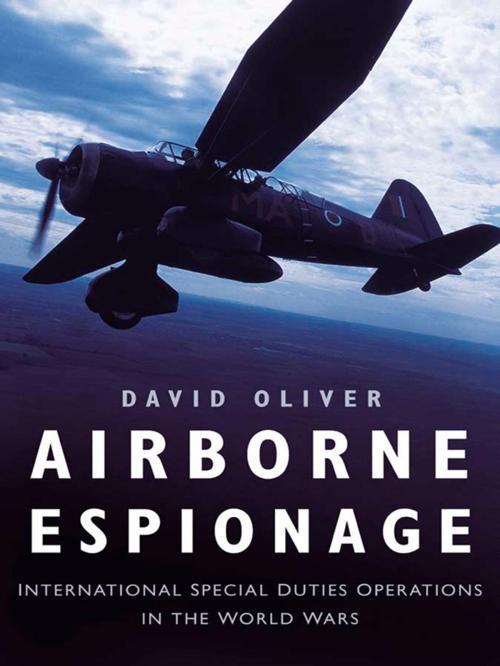Airborne Espionage
International Special Duty Operations in the Second World War
Nonfiction, History, Military, Aviation, World War II| Author: | David Oliver | ISBN: | 9780752495521 |
| Publisher: | The History Press | Publication: | January 13, 2005 |
| Imprint: | The History Press | Language: | English |
| Author: | David Oliver |
| ISBN: | 9780752495521 |
| Publisher: | The History Press |
| Publication: | January 13, 2005 |
| Imprint: | The History Press |
| Language: | English |
At the outbreak of the First World War in 1914, the transport of 'spies' across enemy lines by aircraft was not regarded as a priority. In fact, there was no formal organisation for these flights and no communications network between the air forces and their agents - apart from homing pigeons and the occasional telephone call. The situation had not improved to any great extent by the outbreak of the Second World War in 1939. Although dedicated air units had been established to fly the spies - or 'agents' as they were then known - their aircraft were hand-me-downs and their aircrews considered the 'Special Duties' (SD) role as a poor third to the more glamorous worlds of fighter and bomber operations. However, the tasks undertaken by these men and their aircraft were often more hazardous and demanding than any other type of wartime flying. The Second World War saw the rapid development of infrastructures by the Allies to support their SD operations, mirrored in other combatant nations' activities. Operating in all weathers, invariably at night, often at low level and usually without fighter escort, the SD squadrons and units paid a heavy price in aircrew killed and missing. By their very nature, these operations went unreported in wartime and for some considerable time thereafter. The exploits of British and Commonwealth, American, Free European, Soviet, German, Italian and Japanese airmen and units are recorded in this compelling narrative account.
At the outbreak of the First World War in 1914, the transport of 'spies' across enemy lines by aircraft was not regarded as a priority. In fact, there was no formal organisation for these flights and no communications network between the air forces and their agents - apart from homing pigeons and the occasional telephone call. The situation had not improved to any great extent by the outbreak of the Second World War in 1939. Although dedicated air units had been established to fly the spies - or 'agents' as they were then known - their aircraft were hand-me-downs and their aircrews considered the 'Special Duties' (SD) role as a poor third to the more glamorous worlds of fighter and bomber operations. However, the tasks undertaken by these men and their aircraft were often more hazardous and demanding than any other type of wartime flying. The Second World War saw the rapid development of infrastructures by the Allies to support their SD operations, mirrored in other combatant nations' activities. Operating in all weathers, invariably at night, often at low level and usually without fighter escort, the SD squadrons and units paid a heavy price in aircrew killed and missing. By their very nature, these operations went unreported in wartime and for some considerable time thereafter. The exploits of British and Commonwealth, American, Free European, Soviet, German, Italian and Japanese airmen and units are recorded in this compelling narrative account.















